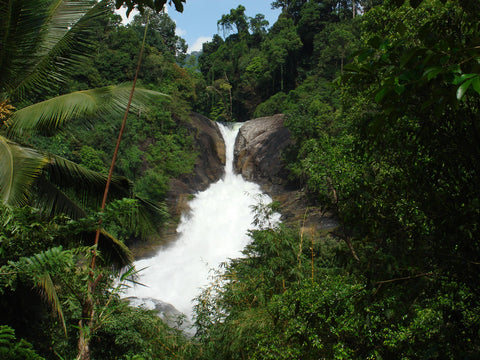Ratnapura: The City of Gems January 31 2016
In the southwestern part of an island nation, Sri Lanka, lies the famed city, Ratnapura. Derived from an ancient Sanskrit language meaning the ‘City of Gems’, its name heralds the fortune it amasses for the local population. The people of Ratnapura come from diverse backgrounds but remain coalesced by the constant supply of rich culture, natural wonder, mystical history and vibrant trade.

With over 52,000 people consisting of Buddhists, Hindus, Christians and Muslims, Ratnapura has seen religion develop a strong and deep culture within its community. Places of worship are abundant and promote a sense of care and compassion for all they can reach. The Maha Saman Devalaya (a shrine dedicated to the deity, Saman, who is considered to be the guardian of Ratnapura), the Siva temple and St. Luke’s Church are prominent locations for communal gatherings and religious ceremonies. A notable ritual of the region involves the annual pilgrimage to the mountain, Sri Pada.
 Sri Pada is a 2243-meter-high peak that has gained widespread acclamation for its natural beauty and religious importance. It is believed that Adam took shelter at the foothills of this peak when he was banished from Garden of Eden. It also houses the sacred footprint of Lord Buddha when he arrived in Sri Lanka. The significance of this peak across religions grant it a mystical allure and have continued to impress travelers from across the world by its unique view of the rising sun across the plains of Ratnapura.
Sri Pada is a 2243-meter-high peak that has gained widespread acclamation for its natural beauty and religious importance. It is believed that Adam took shelter at the foothills of this peak when he was banished from Garden of Eden. It also houses the sacred footprint of Lord Buddha when he arrived in Sri Lanka. The significance of this peak across religions grant it a mystical allure and have continued to impress travelers from across the world by its unique view of the rising sun across the plains of Ratnapura.
The geography of Ratnapura also features the ‘Kalu’ river and numerous waterfalls. The rich alluvial deposits of this river scatter the world’s finest gemstones throughout this city. Thousands of years of crystallization and erosion have blessed Ratnapura an abundance of rubies, sapphires, garnets and topaz. The local traders partner with landowners and community developers to mine these invaluable gems and have set up a flourishing industry that has generated a strong and sustained growth in jobs, infrastructure and regional development.
 The ‘Kalu’ river also generates a wide array of agricultural farming in the city because of the incredibly fertile soil surrounding it. Rice cultivation is by far the most prevalent form of farming in the area but there are also households growing delicious mangos, bananas and papayas. There has also been a recent surge in tea plantations which are capable of brewing a bold and flavorful cup unique to the nation’s multi-generational tea industry.
The ‘Kalu’ river also generates a wide array of agricultural farming in the city because of the incredibly fertile soil surrounding it. Rice cultivation is by far the most prevalent form of farming in the area but there are also households growing delicious mangos, bananas and papayas. There has also been a recent surge in tea plantations which are capable of brewing a bold and flavorful cup unique to the nation’s multi-generational tea industry.
The evolution of each industry has gradually allowed the skillset of the local population to improve. 3D CAD designing for jewelry and laboratory tests for the safe cultivation of tea are some of the emerging areas for spearheading the growth in the job development. Many more are likely to follow as this city continues to bless its people in the form of professional and regional development.
